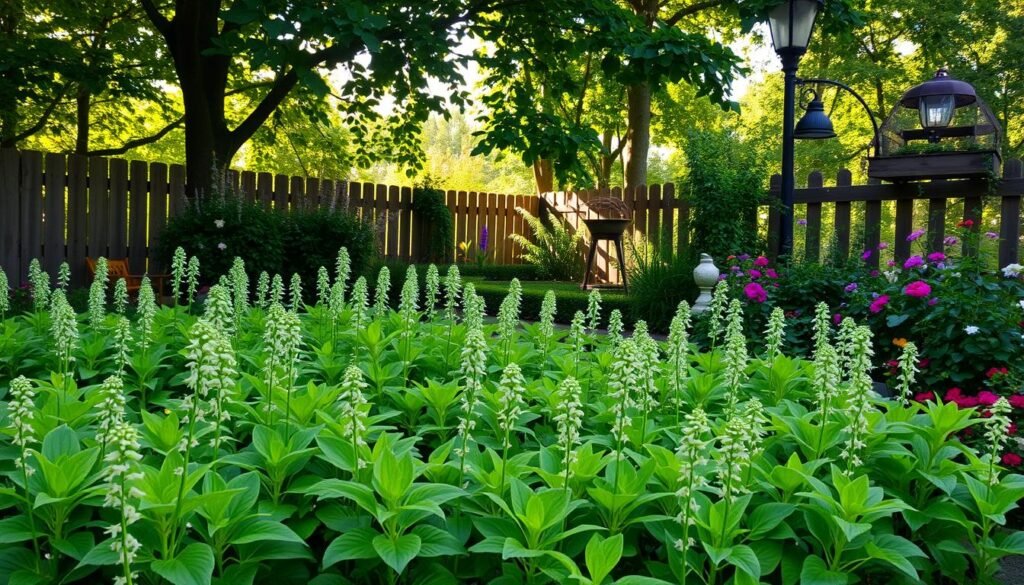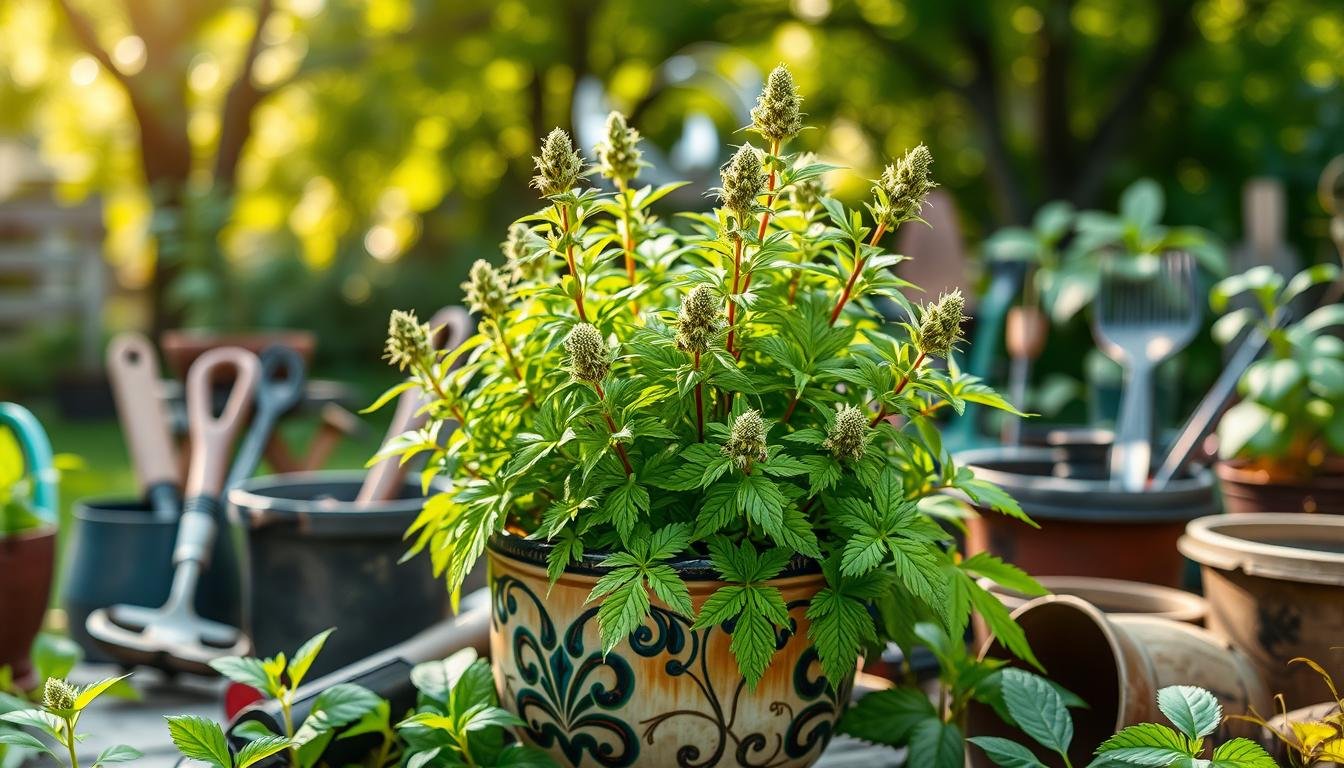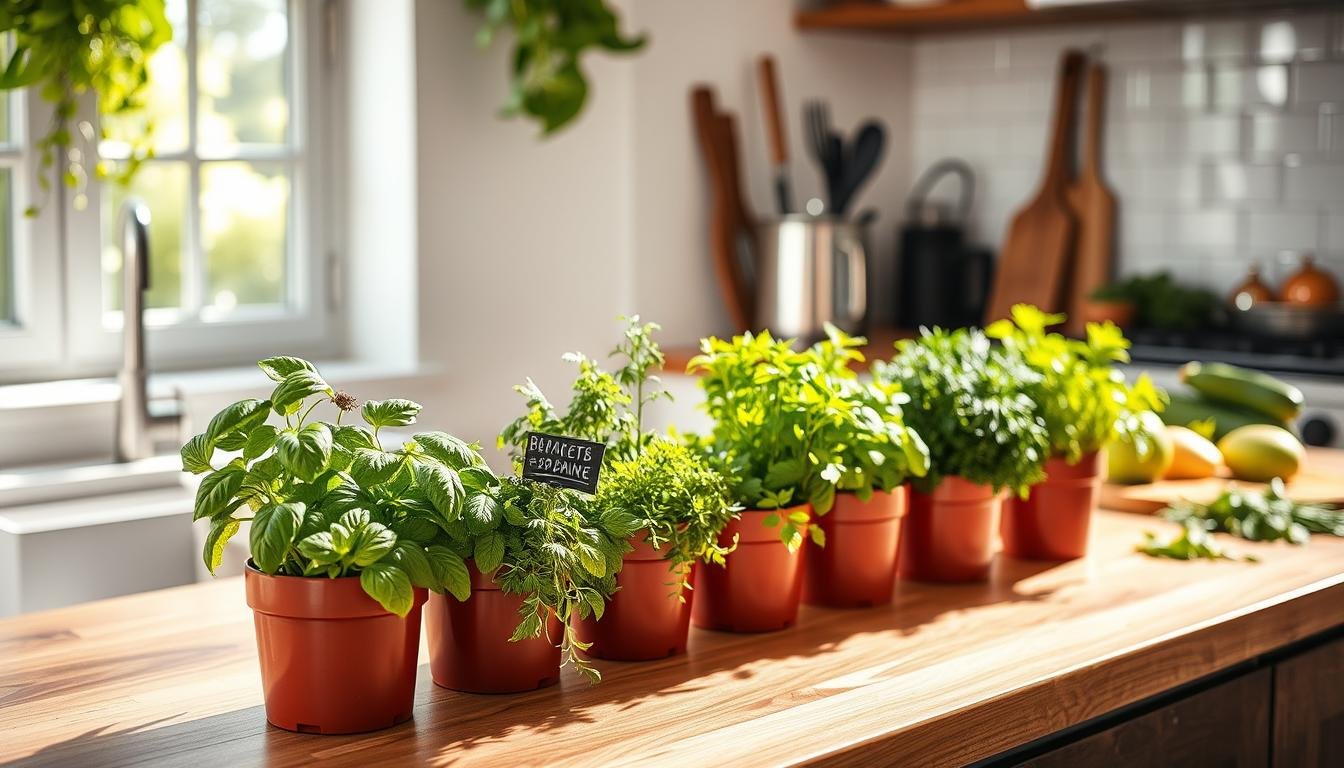Did you know that catnip affects about 70-80% of cats? This herb, called Nepeta cataria by scientists, is very loved by cats. It’s also great for home gardeners and pet lovers. In this guide, we will talk about how to harvest catnip. You will learn the best places to grow it and how to use this amazing herb. We’re here to help!
Key Takeaways
- Catnip affects 70-80% of cats, making it a popular addition to pet gardens.
- Understanding the catnip plant is essential for best cultivation practices.
- Choose the right location with ample sunlight for optimum growth.
- Soil preparation plays a vital role in the health of your catnip plants.
- Harvesting catnip at the right time maximizes potency and flavor.
- Proper drying and storage techniques ensure long-lasting freshness of catnip.
What is Catnip and Why Should You Grow It?
Understanding catnip sheds light on why many cat lovers adore it. It’s part of the mint family, known for its enticing scent. This plant has nepetalactone, making cats playful around it.
Understanding the Catnip Plant
Catnip, or Nepeta cataria, is a perennial herb. It has soft, heart-shaped leaves and tall stems. The plant can grow three feet tall, with lavender flowers appearing in summer.
These features add beauty to gardens and joy for cats. Catnip is also quite tough, flourishing in various soils.
Benefits of Having Catnip for Your Feline Friends
There are many perks to growing catnip:
- It serves as a natural toy, encouraging cats to exercise and stay mentally active.
- Catnip can calm stressed pets with its herbal properties.
- It beautifies gardens with its flowers and scent.
- Growing this plant is easy, and it rewards you plentifully.
Choosing the Right Location for Your Catnip Garden
Finding the perfect spot for your catnip garden is crucial. Catnip needs the right amount of sunlight and soil prep. Knowing this helps your garden grow well, making you and your cats happy.
Ideal Sunlight Requirements
Catnip loves the sun and needs at least 6 hours of it every day. Pick a spot for your garden that gets plenty of sunlight. This sunlight helps the plant grow and makes its leaves more appealing to cats.
Soil Type and Preparation for Catnip Plants
The soil you use for catnip matters a lot. Catnip does best in soil that drains well with a pH that’s slightly alkaline or neutral. Start by tilling the soil to let air in. Then, mix in compost. This helps the soil nourish the plants well.

Growing Catnip Plants: A Step-by-Step Guide
Starting to grow catnip plants is both exciting and rewarding. We’ll guide you through key steps for growing this aromatic herb. Learn how to pick the right varieties and water effectively.
Selecting the Right Catnip Varieties
Choosing the right variety of catnip is key. Nepeta cataria is famous for its strong scent. Nepeta grandiflora has a floral aroma. Both are great for your cats and look beautiful in gardens.
Best Planting Methods for Healthy Growth
You can plant catnip in different ways. Sow seeds outside in soil or start indoors in trays. Moving seedlings to the garden helps control their early growth. Make sure your catnip has enough room to grow.
Watering and Feeding Your Catnip Plants
Keeping catnip watered right is crucial. Keep the soil evenly moist but not too wet or dry. Water when the top inch of soil is dry. Use organic fertilizers to help your plants grow strong and healthy during the season.
Identifying the Catnip Harvest Season
Knowing when to pick catnip is key for the best aroma and flavor. The right timing can boost the essential oils in your catnip. Generally, the best time to harvest is in the middle to late summer.
Signs That Your Catnip is Ready for Harvesting
There are clear signs to look for when your catnip is ready. You should check for:
- Plant Height: The plants should be about 12 to 24 inches tall.
- Leaf Color: Look for leaves that are a bright green.
- Flower Buds: Harvest right before the buds open for the best result.
Timing Your Harvest for Maximum Potency
Picking your catnip at the right time is vital for its strength. The best is in the morning after the dew has dried. Avoid picking during wet or very humid weather. This can impact the taste and smell of the leaves. By watching these signs and choosing the right time, you can have the most fragrant catnip all season.

Importance of the Right Tools for Catnip Harvesting
Choosing the right tools for harvesting catnip is key to a good harvest. Using the proper tools ensures the job is easier and keeps the plants healthy. Here are some vital tools for harvesting and safety tips to keep in mind.
Essential Tools You Need for Harvesting
- Garden Shears: A sharp pair makes clean cuts and keeps the plant safe.
- Pruning Scissors: Best for cutting individual stems in small spaces.
- Harvesting Baskets: They hold your freshly cut catnip and prevent damage.
- Gloves: They protect your hands from scratches and dirt.
- Protective Eyewear: Shields your eyes from debris.
Safety Tips While Using Harvesting Tools
Staying safe while harvesting is important. Here are some tips to help you stay safe:
- Always use sharp tools for clean and safe cuts.
- Wear gloves to keep your hands safe from harm.
- Wear eyewear to protect your eyes from debris.
- Check your tools before use and replace any that are damaged.
- Harvest during the day for better visibility.
With the right tools and safety tips in mind, harvesting catnip can be fun and productive.
Techniques for Harvesting Catnip Effectively
Knowing how to harvest catnip effectively is key. This means learning the right ways to ensure your plants stay healthy and grow back well. Cutting catnip the correct way is vital for healthy regrowth. Here’s how to make your harvest great and keep your plants happy.
Best Methods for Cutting the Stems
Cutting catnip stems the right way helps new growth. Here’s what to do:
- Always cut stems just above a leaf node. This encourages new buds to grow from the node.
- Use sharp, clean shears for clean cuts. Dull tools can harm the stems and slow recovery.
- Don’t cut more than a third of the plant at once. This ensures it has enough leaves for photosynthesis.
Tips for Maintaining Plant Health During Harvesting
It’s crucial to keep your catnip healthy while harvesting. Here are some important tips:
- Watch your plants and take breaks if growth slows. It’s a sign the plant needs rest.
- Water your plants well, especially after cutting. It helps them to recover.
- Remove weeds and keep the area clean. This helps your catnip get more nutrients and air.
How to Dry Catnip Leaves Properly
Drying catnip the right way is key to keeping its strength and taste. There are several methods to dry catnip that ensure your cats enjoy its benefits. Here’s a look at some effective ways to dry catnip leaves.
Different Drying Methods Explained
There are a few ways to dry catnip leaves, each having its perks. Let’s check out the most popular drying methods:
- Air Drying: Hang fresh catnip stems upside down in a spot that’s cool, dark, and airy. It takes one to two weeks to dry naturally.
- Dehydrator: A food dehydrator can dry catnip quickly. Keep it at a low heat, around 95-115°F, for the best outcome. This only takes a few hours.
- Microwave Drying: For a fast way, put catnip leaves between two paper towels and microwave for short periods. But, be careful not to overheat and harm the leaves.
Storing Dried Catnip for Long-Term Use
After drying your catnip leaves, it’s important to store them right. This keeps them fresh and strong. Here are tips for storing dried catnip:
- Airtight Containers: Keep dried leaves in glass jars or plastic containers that close tightly. This stops them from getting moist and stale.
- Cool, Dark Places: Put your catnip in a cool, dark spot like a cupboard. This keeps its flavor from fading.
Use these methods for drying and storing catnip to make sure it stays tasty and potent for your cats.
Catnip Processing Techniques for Maximum Flavor
After you’ve picked your catnip, there’s more fun ahead. There are various ways to process catnip to boost its flavor. These methods are great for your cats and can be used in food and for health benefits. Two common ways are infusing oils with catnip and making catnip tea.
Infusing Oils with Catnip
Infusing oils with catnip is an excellent idea. Just mix dried catnip leaves with a carrier oil like olive or coconut. Let it sit for a few weeks. This method makes cooking oils or soothing oils for your cats. It takes advantage of catnip’s relaxing effects.
Making Catnip Tea for Your Feline Friends
Making catnip tea is another fun option. Just soak dried catnip leaves in hot water for a bit, then cool it down. Give this herbal tea to your pets. It not only helps keep them hydrated but also offers health perks they’ll love. Trying these catnip processing methods will make your cats happier and enhance your use of herbs!



